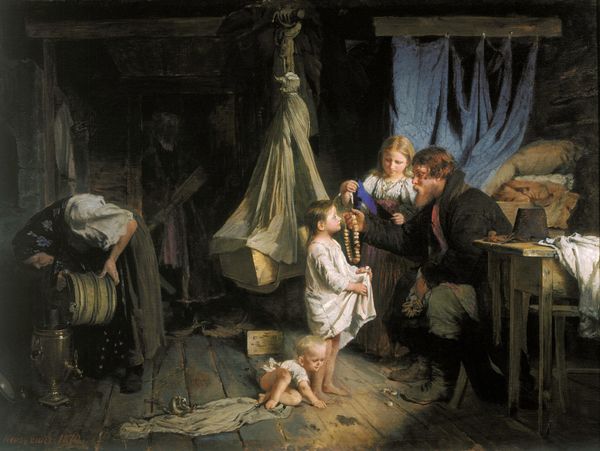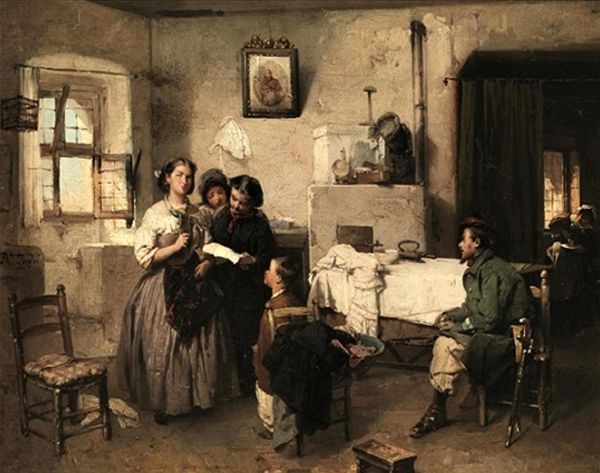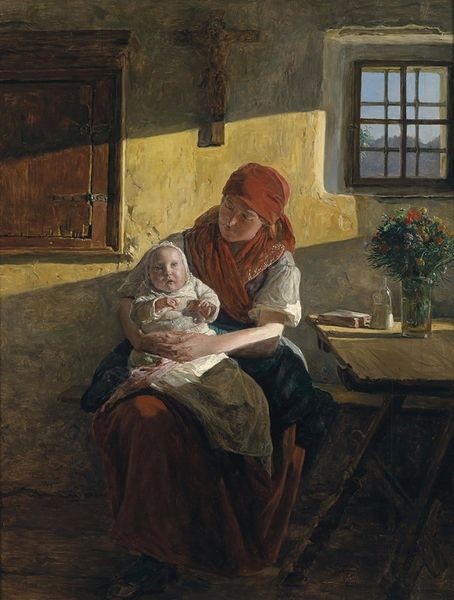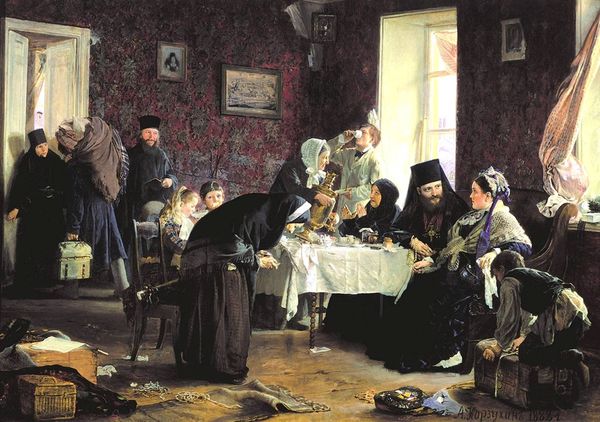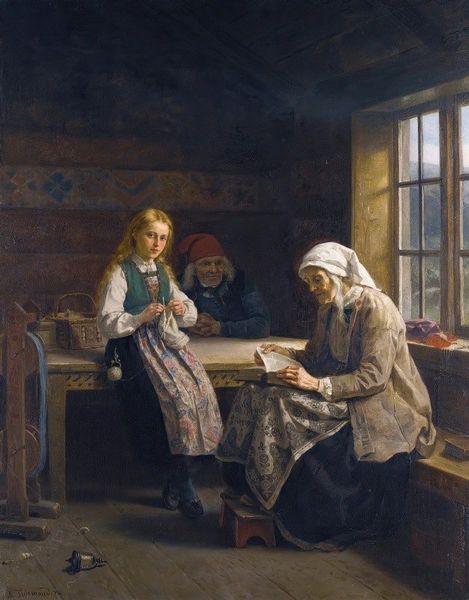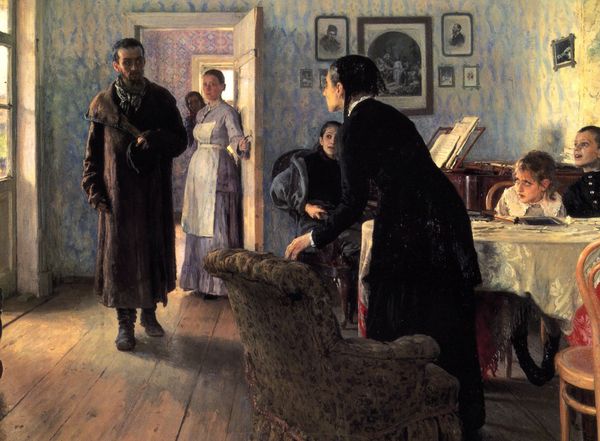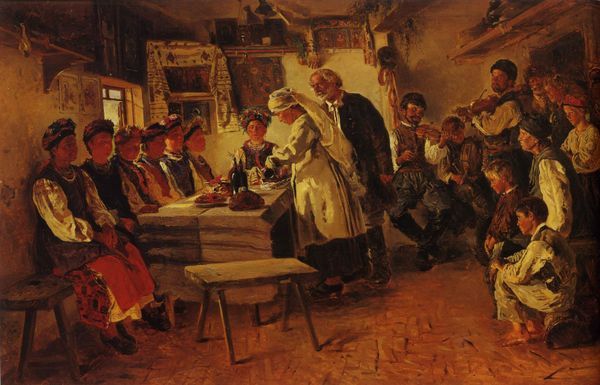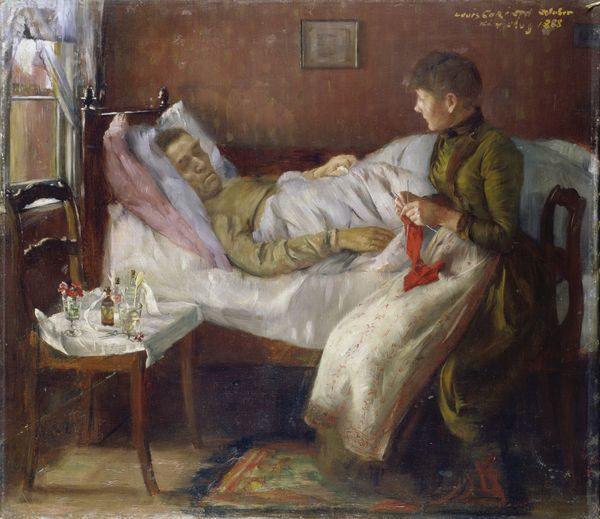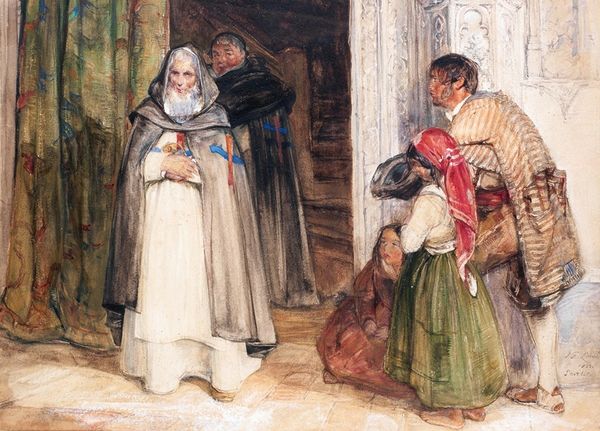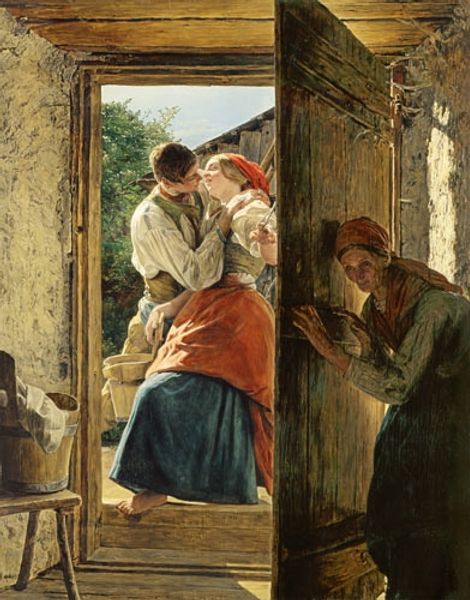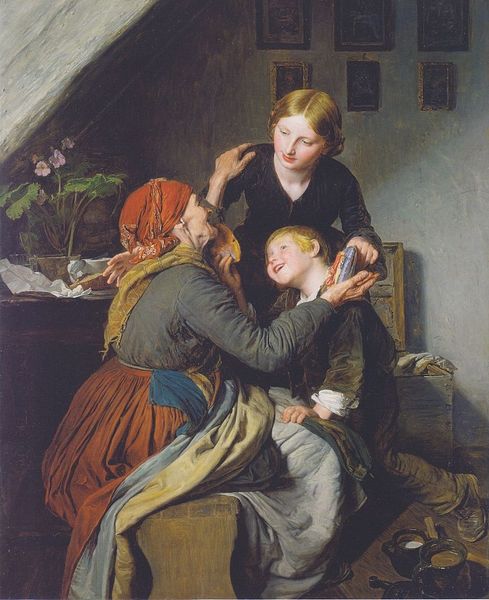
Copyright: Public Domain: Artvee
Editor: This is "Interior from the Village Ring" by L.A. Ring, created in 1882 using oil paint. The scene feels quite intimate, like a glimpse into a private world. The interior setting looks cramped and humble. I’m curious, what aspects stand out to you when you look at it? Art Historian: It's fascinating how Ring captures the mundane to reveal complex social realities. I see not just an interior, but a depiction of the socioeconomic constraints shaping women’s lives in rural Denmark. Notice the spatial dynamics: the layering of beds, the compact table setting. These aren’t just elements of domesticity; they're visual cues to a lived reality dictated by necessity and the gendered division of labor. Editor: Gendered division of labor? Art Historian: Precisely. The woman, presumably the mother or grandmother, is performing the labour of serving while the girls look on. How might that dynamic play into our understanding of their roles, their opportunities, and their very identities within this social structure? The child is sipping from her cup already. What do you read from her expression, or her access to taking a cup? Editor: Hmm, the older girl’s gaze is rather intense, and yes she does seem privileged! So the artwork, even in its quietness, critiques social norms and gender roles of the time? Art Historian: It subtly proposes a perspective on it. Look at the details: the stark light falling across the fields visible through the window creates a dichotomy, underscoring the connection between domesticity and nature but simultaneously implying a longing to what exists beyond that domestic realm for those women and girls trapped in service. Editor: I see, it’s less a neutral depiction of a moment, and more a subtle commentary about social dynamics, the artist makes you read into each character and part of the scenery. Art Historian: Exactly! Ring doesn't just show us a scene; he invites us to critically engage with the realities of class and gender. We are also observing the intersectional experience and the social challenges women face; their restricted choices as dictated by economic and societal pressures that define the home. Editor: I didn’t think of it that way at first, but seeing how he frames this as an interaction of identities makes me appreciate the piece so much more. Art Historian: Indeed. By exploring beyond what is presented we expand our understanding of visual arts and the role they play.
Comments
No comments
Be the first to comment and join the conversation on the ultimate creative platform.

